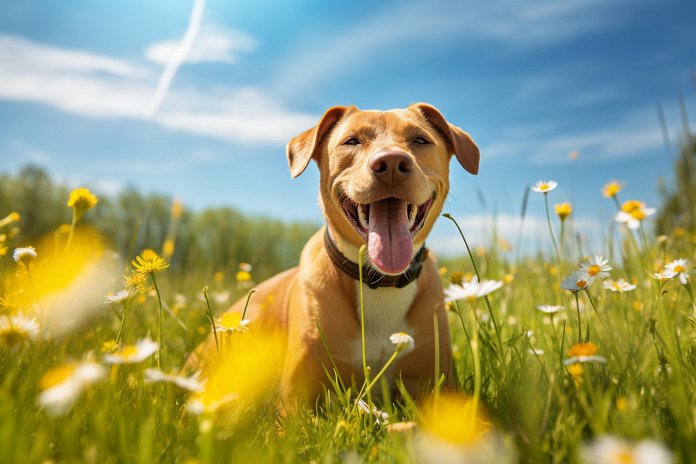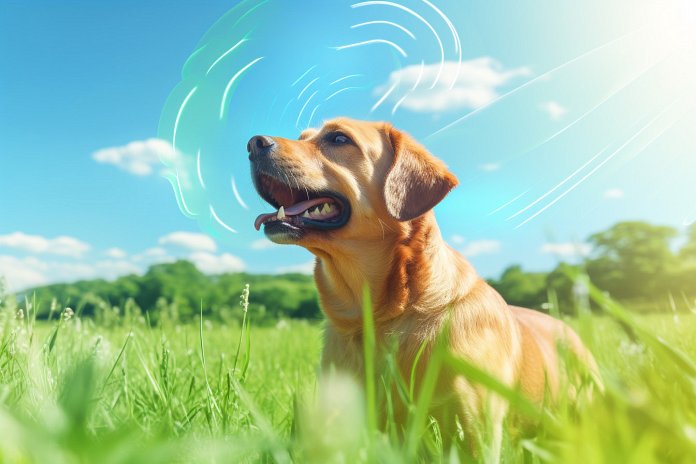
Dogs cannot detect carbon monoxide on their own and alert their owners to its presence. However, pets, including dogs, are more susceptible to carbon monoxide poisoning than humans. This is especially true during the cold winter months when houses are sealed up to keep warmth in but also trap fumes, such as exhaust fumes from attached garages. Dogs spend more time at home and even a small exposure to carbon monoxide can be fatal. To prevent this, it is important to keep dogs out of garages during cold months and install carbon monoxide detectors in the home.
Signs of Carbon Monoxide Exposure
If a dog shows signs of weakness, lethargy, coordination problems, severely reddened gums or skin, and changes in reflexes, it is important to take them to the vet immediately. Small pets and children are the most vulnerable to carbon monoxide, so if a pet is affected, the whole family should be checked as well. It is important to monitor a pet’s behavior during winter months for any changes and to be aware of body language signs of carbon monoxide exposure. If any signs are noticed, action should be taken to ensure the safety of the pet and family.
Body Language Signs
Some signs of possible carbon monoxide poisoning in dogs include shaking, weakness, yawning, low tail carriage, raspy panting, lack of focus, and sleepiness. Other signs to watch out for include stumbling, vomiting, general fatigue, difficulty walking, and coordination issues.
History and Science of Carbon Monoxide Poisoning in Dogs
Carbon monoxide poisoning in homes is a relatively new problem, as dogs were not always kept indoors. The rise of attached garages and gas heating has increased the risk of carbon monoxide poisoning. Smaller individuals, both humans and pets, are more quickly affected by carbon monoxide due to their smaller systems. Studies show that pets and small children can be overcome by carbon monoxide poisoning in as little as 10 minutes. If high levels of carbon monoxide are detected, oxygen therapy must begin immediately.
The science behind carbon monoxide poisoning involves the odorless and colorless nature of carbon monoxide. It attacks the bloodstream and lungs, decreasing the ability to inhale and expel oxygen. Prolonged exposure can lead to hypoxemia and potentially result in death within minutes, particularly in young children and smokers.
“Carbon monoxide poisoning in dogs can be fatal in minutes – recognize the signs and take immediate action.”

Tips & Things to Know
1️⃣ Dogs cannot directly detect carbon monoxide; they are alerted by the alarm of a carbon monoxide detector. Therefore, it is crucial to install carbon monoxide detectors throughout your home to protect both your family and your pets.
2️⃣ Pets are more susceptible to carbon monoxide poisoning than humans, with exposure being potentially fatal. During the colder months, when homes are sealed up, the risk increases. It’s best to prevent pets from entering areas like garages where high levels of fumes might be present.
3️⃣ If your dog shows signs like weakness, lethargy, coordination problems, reddened gums or skin, shaking, yawning, or difficulty walking, it could be a sign of carbon monoxide poisoning. Should these symptoms be observed, seek immediate veterinary care for your pet and medical attention for your family. Also, ensure to have your home checked for carbon monoxide levels.
Frequently Asked Questions, Answered ✅
1. Can dogs detect carbon monoxide?
No, dogs cannot directly detect carbon monoxide. They may be alerted by the carbon monoxide detector’s alarm going off, but they cannot sense the gas itself.
2. Are pets more susceptible to carbon monoxide poisoning than humans?
Yes, studies suggest that pets are more vulnerable to carbon monoxide poisoning than humans. They are especially at risk during the cold winter months when houses are sealed up and fumes are trapped inside.
3. What are the signs that a dog has been exposed to carbon monoxide?
Signs of carbon monoxide exposure in dogs include weakness, lethargy, coordination problems, severely reddened gums or skin, and changes in normal reflexes.
4. What should I do if I suspect my dog has been exposed to carbon monoxide?
If you notice signs of carbon monoxide poisoning in your dog, it is important to take them to the vet immediately. You should also get your entire family checked out and evacuate the house until professionals can check carbon monoxide levels.
5. How does carbon monoxide poisoning affect dogs?
Carbon monoxide poisoning can cause dogs to become weak, sleepy, experience gastrointestinal upset, lose coordination, and even collapse. It can be potentially fatal, especially for smaller pets.